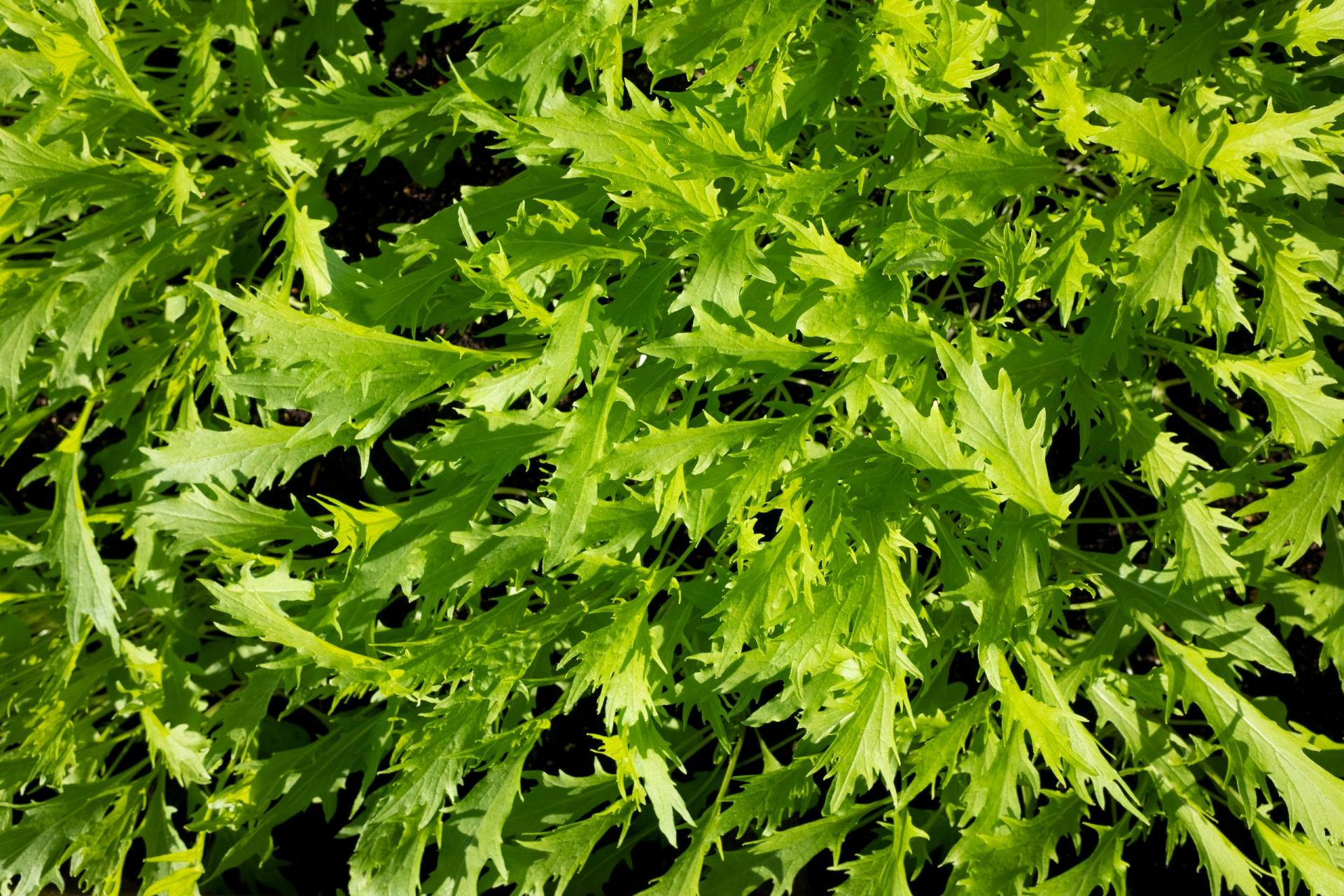

Mizuna and Mibuna are Japanese salad leaf vegetables that are part of the brassica family. They grow similarly to Pak Choi and Chinese Cabbage and can be eaten fresh in salads or lightly cooked.
Mizuna and Mibuna are easy to grow, giving you a harvest all, or most of the year round with continual sowing.
You can sow Mizuna and Mibuna indoors early, or directly from March onwards in moist soil. They should be protected or planted out when the weather has warmed up - Too cold and they can bolt, too hot and they will wilt quickly. Harden your plants off before planting permanently.
Mizuna and Mibuna can be planted in containers, and in the ground. A staggered sowing will provide a crop on an ongoing basis. Autumn and winter plants will require protection or to grow or be moved indoors.
Keep watered regularly in dry spells and keep them weed-free. You can add mulch to retain moisture too.
Once the flower heads begin to form, they can be removed to encourage re-growth of the leaves, which are a cut and come again type of growth. You can pick leaves regularly or wait and lift whole heads.
Bear in mind, the usual pests associated with brassicas, such as slugs and snails.
Mizuna and Mibuna have a mild mustard-like flavour and are a tasty addition to a mixed salad. More mature leaves can be used, lightly cooked or stir-fried.